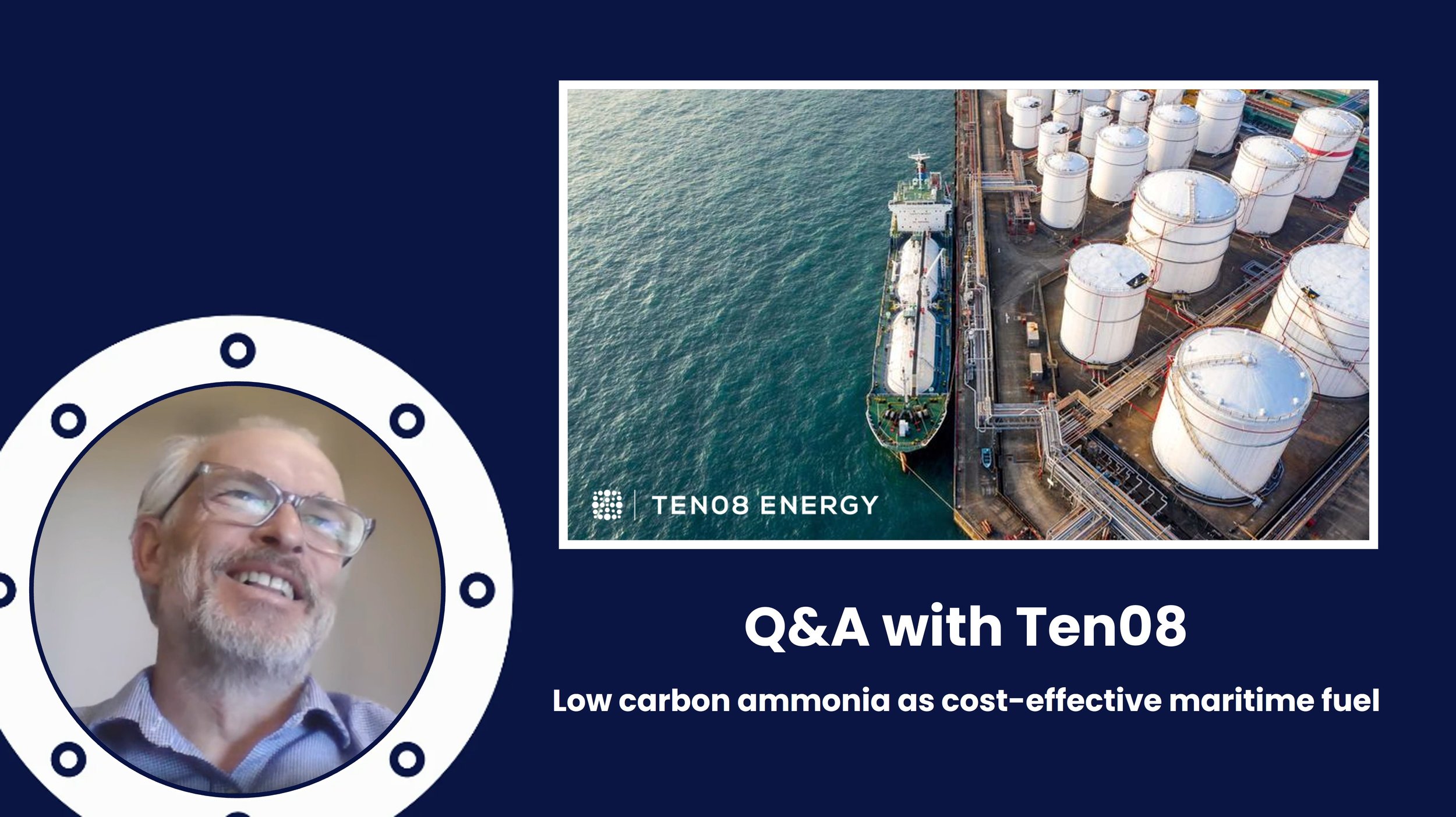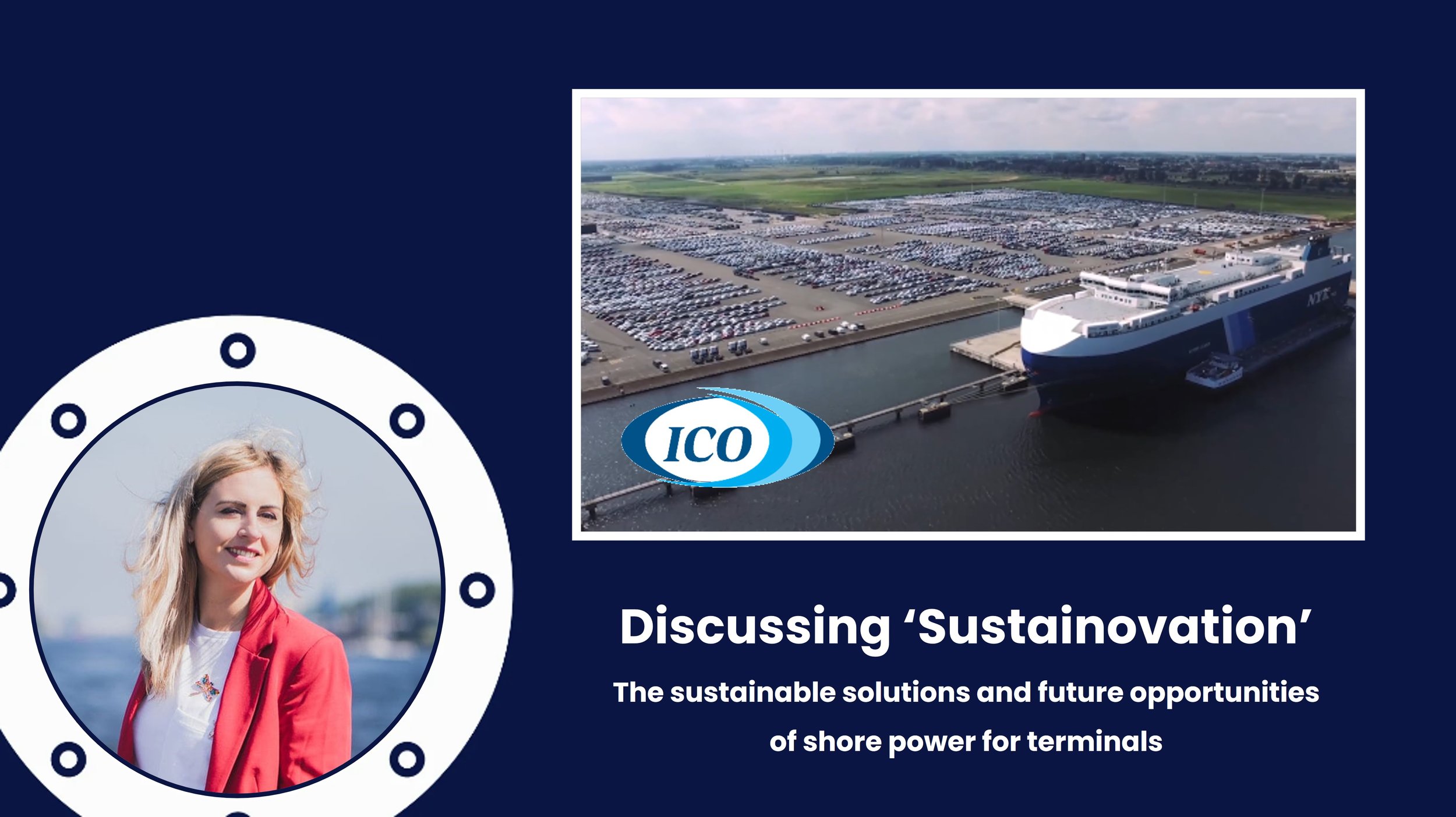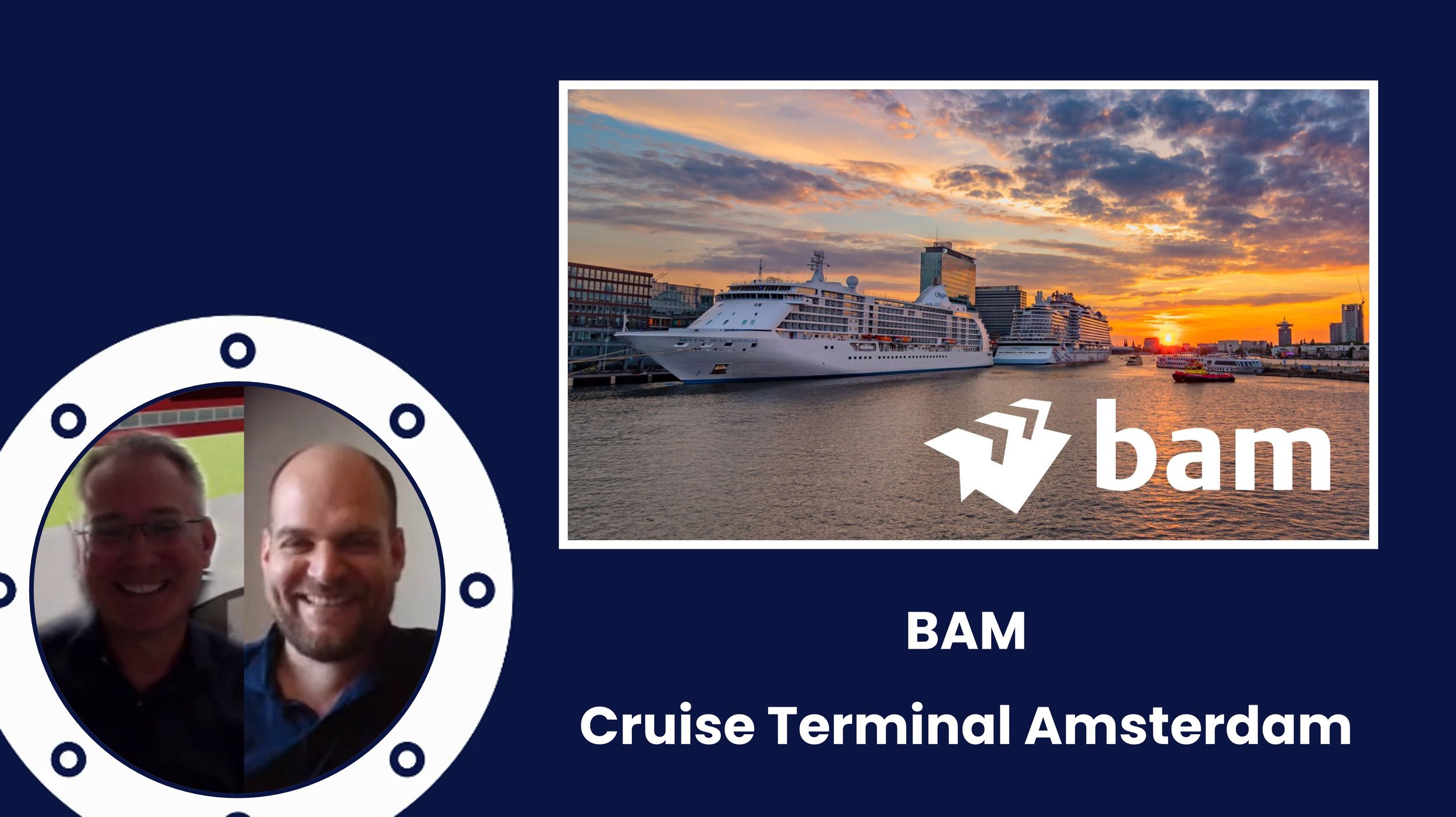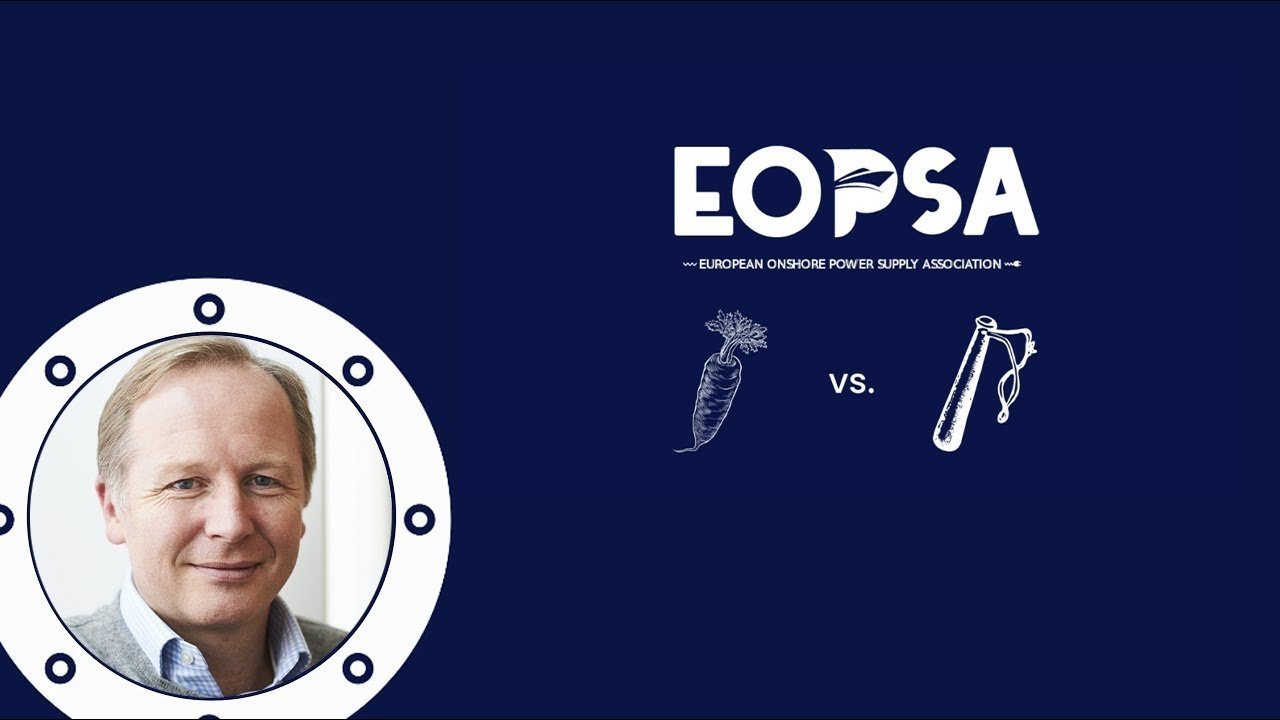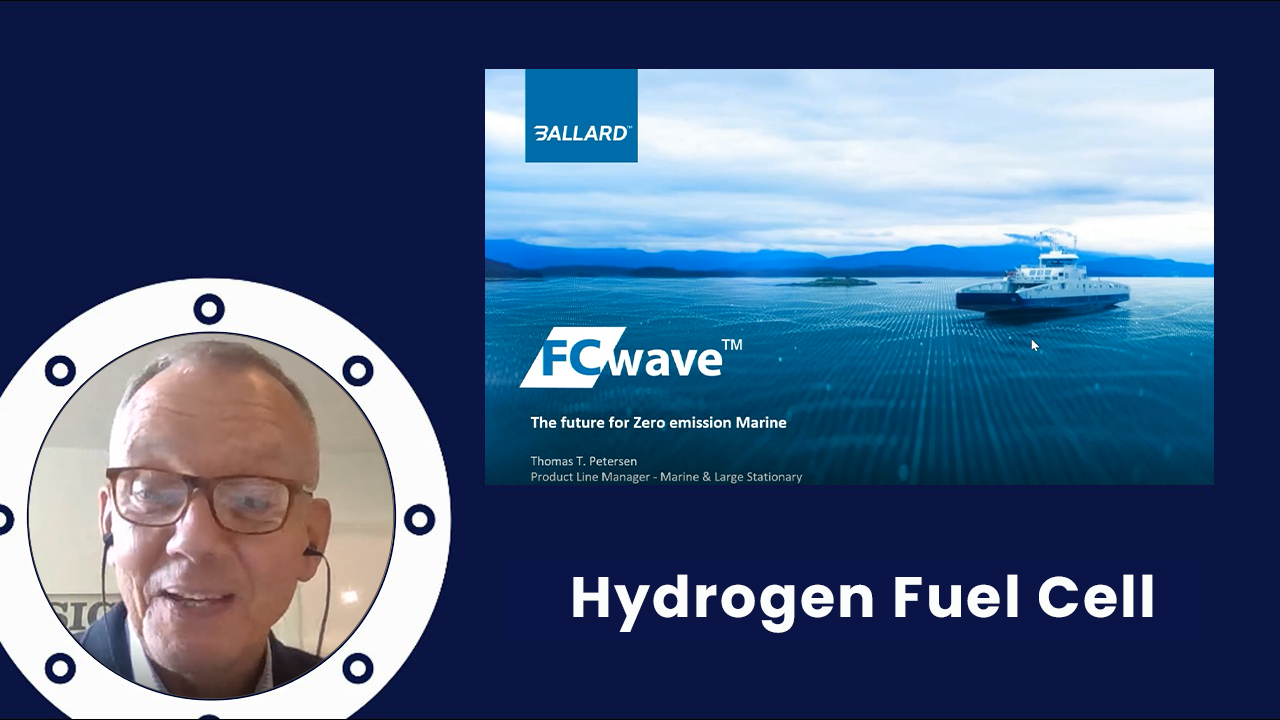Llow carbon ammonia as maritime fuel - Q&A with Ten08
About Q&A
This Q&A session explores the role of low-carbon ammonia in decarbonizing the maritime industry, featuring Jean and Paul, co-founders of Ten08, a Houston-based company developing low-carbon ammonia for industrial and maritime use.
Ten08’s mission is to supply the maritime sector with scalable, clean fuel solutions that can help the industry reduce its greenhouse gas emissions in line with tightening regulations and climate targets. While many discussions around maritime sustainability remain theoretical, Jean and Paul are actively implementing solutions. Ten08 doesn't restrict itself to “green” ammonia—produced using renewable energy, but rather focuses on low-carbon ammonia, which includes both green and blue ammonia options. Their approach is pragmatic: provide the fuel that customers need in a way that reduces emissions and aligns with regulatory and market demands. With a strong industrial foundation in Houston, Ten08 is positioning itself to serve both local industries and the international shipping sector as demand for alternative fuels grows.
Key insights
Blue ammonia is cost-effective as marine fuel, even attractive compared to fossil when incorporating regulatory compliance (EU ETS and FuelEU).
Ten08 works together with Navigator Gas, which has handled ammonia onboard their vessels for decades.
Infrastructure and safety challenges are real but solvable. Regulations can be the biggest bottleneck (such as CBAM or other ways of making blue ammonia less attractive).
Questions asked
What is the difference between green and blue ammonia?
Green ammonia is produced using renewable electricity (such as solar or wind) to power electrolysis, while blue ammonia is made from natural gas but includes carbon capture and storage to reduce emissions. Jean explained that Ten08 isn’t fixated on labels but focuses on providing low-carbon ammonia—regardless of whether it’s green or blue—based on what’s feasible and meets customer needs.
Why is TEN08 based in Houston?
Jean and Paul emphasized Houston’s unique position as a global energy hub. The city offers access to essential infrastructure like pipelines, storage, and export terminals, as well as a skilled workforce and strong industrial base. These elements are crucial for scaling up ammonia production and distribution efficiently.
What are the biggest challenges in scaling up ammonia use for maritime fuel?
One of the main issues is demand uncertainty - shipowners are hesitant to invest without clear regulatory signals or pricing stability. There are also safety concerns, as crews and ports need proper training and equipment to handle ammonia. Lastly, the infrastructure for bunkering ammonia at ports is still in its early stages, and needs significant development.
Which types of ships or shipowners are showing early interest in ammonia?
Larger shipowners who are already facing regulatory pressure or who have made climate commitments are among the first movers. Container ships and bulk carriers are particularly engaged. Jean noted that regions like Europe and Asia are leading the way, thanks to stricter regulations and more proactive maritime policies.
Are you focusing more on local demand or export markets?
Ten08 is targeting both. Local industrial clients provide stable, baseline demand, but the maritime sector—particularly bunkering—is seen as a major growth opportunity. As global ports begin preparing for ammonia bunkering, the export potential becomes more significant.
When will ammonia realistically be available for ships to use as fuel?
Jean estimated that demonstration projects will start appearing within the next two to three years. However, for widespread commercial use, especially in deep-sea shipping, the timeline is closer to five to seven years. This depends on how quickly regulations, infrastructure, and investment align.
How are new regulations like FuelEU Maritime and EU ETS affecting demand for ammonia?
These regulations are creating strong incentives for shipowners to decarbonize. Jean explained that ammonia is one of the few fuels that could realistically scale to meet the emissions targets these policies demand. As such, regulations are accelerating interest and potential adoption.
How do you ensure transparency in carbon intensity for your ammonia?
Ten08 is working with third-party verifiers to certify and audit the carbon footprint of their fuel. It is stressed that traceability and transparency are critical—not just for compliance, but to build trust with customers who rely on accurate emissions data.
Are you partnering directly with shipowners?
Yes, partnerships are a key part of Ten08’s go-to-market strategy. They are actively engaged in discussions for offtake agreements, pilot programs, and even co-investment opportunities. These collaborations help ensure that ammonia supply and shipowner demand develop in sync.
How important is government support for developing your projects?
Public funding and subsidies are vital, especially in the early phases. Jean points out that government incentives help de-risk large infrastructure investments, stimulate demand, and make it financially viable to bring low-carbon ammonia to market at scale.


